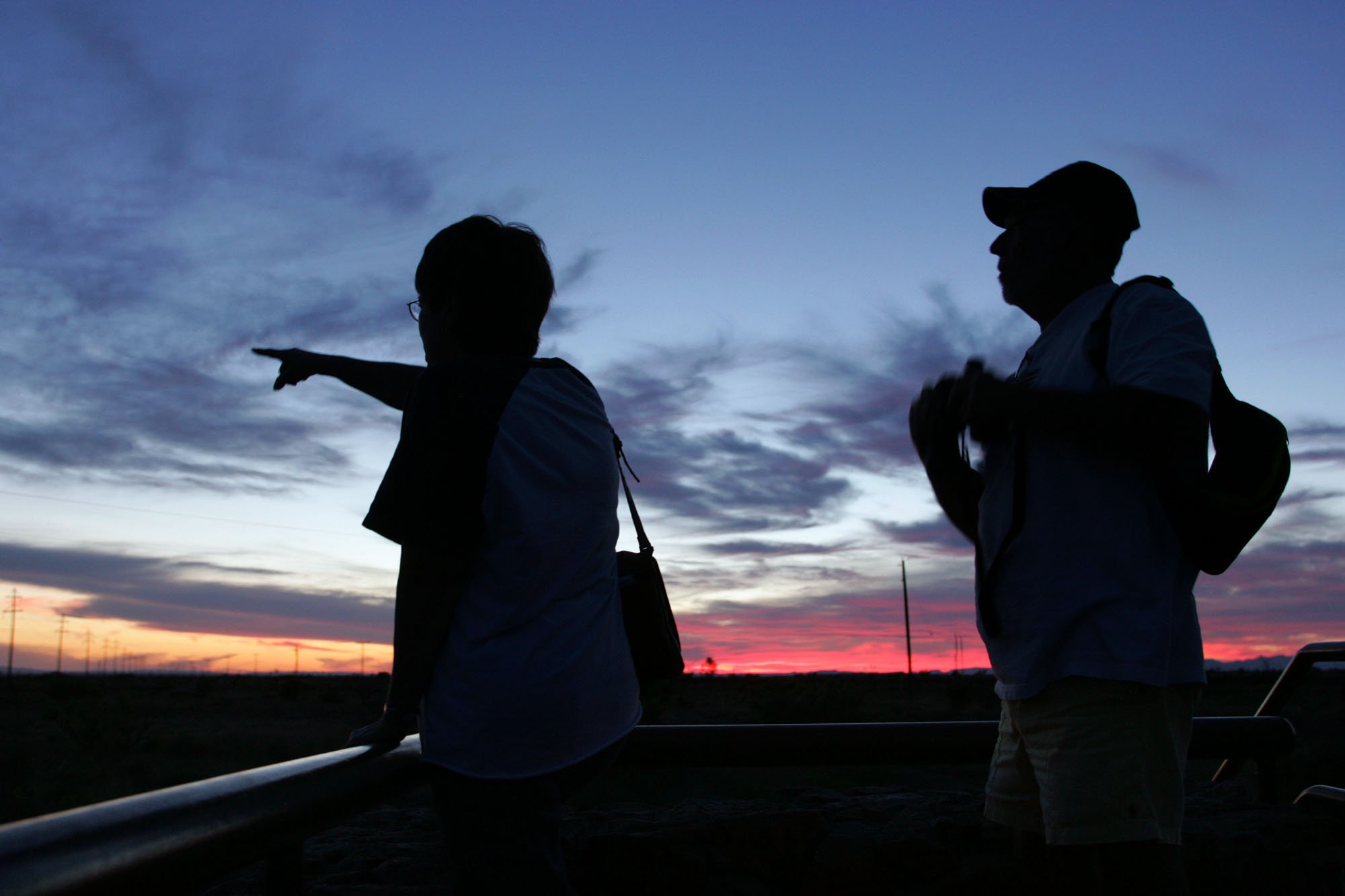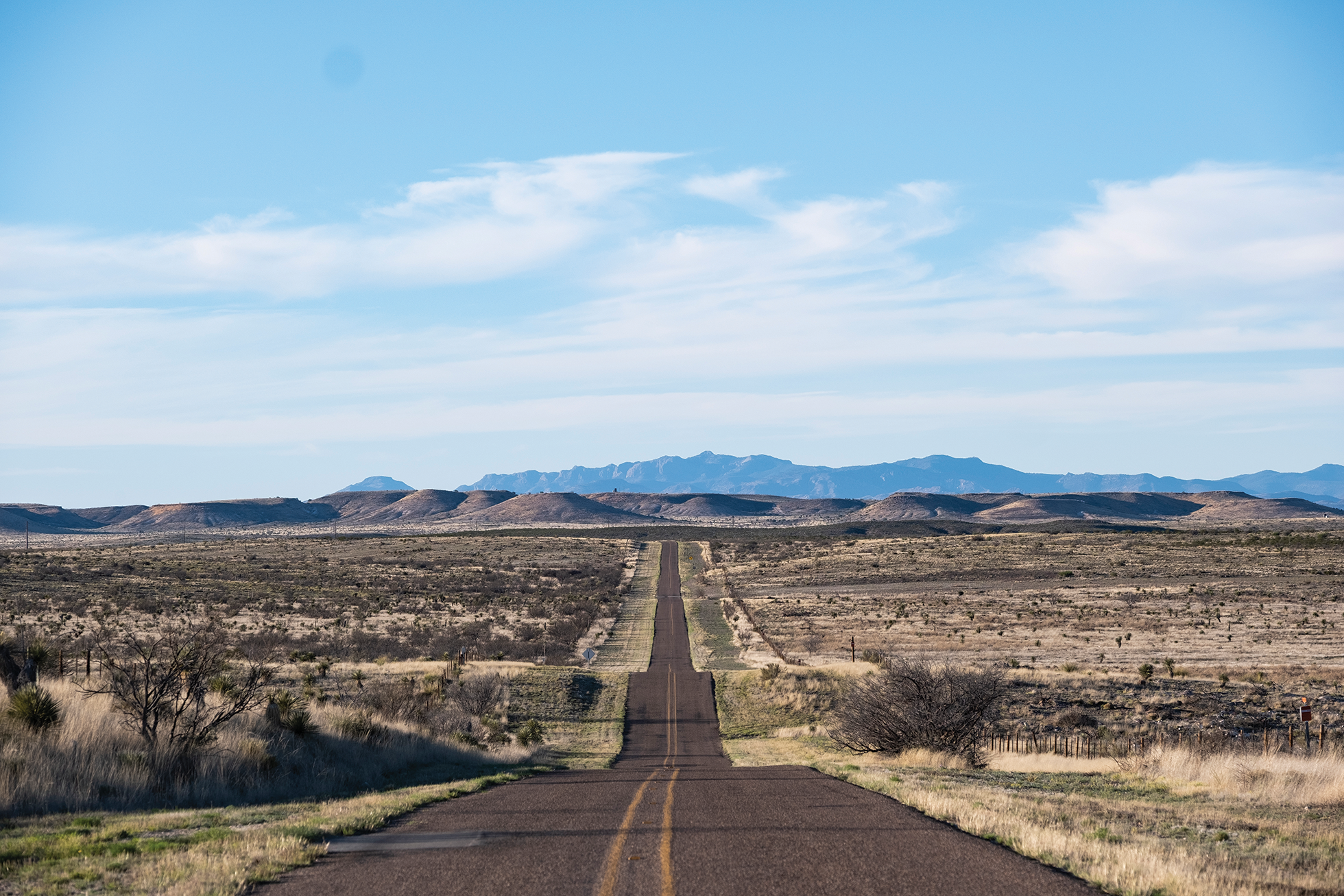Film Festivals and the Myth of Marfa
Why Marfa? I don’t know. I wanted to put on a film festival, and here we are.
-Robin Lambaria,MFF organizer
To understand why the Marfa Film Festival has grown so fast from a tiny regional gathering to the beginnings of institution, you have to understand that it plays brilliantly off of a peculiarly Texan myth.
Three years ago, the festival was tiny, a few films in the desert with a little bit of coverage on the novelty of it all. Now it’s on its way to being a little Sundance, drawing people from all over the country and films from all over the world. I’m sitting in the unofficial press lounge–on the bean bag chair across from me is a writer from the New York Times, and the Vanity Fair guy just left.
No one seems quite sure how this has happened–good PR has helped, no doubt, and the festival organizers have done a good job making the festival worth everyone’s while. But more than anything, the biggest boost has been what I would call the Myth of Marfa. This is the myth that led to the festival, and it’s the myth that led us all here.
Marfa, for those who don’t know, is a tiny town perched on a mesa in the Chihuahan desert almost all the way to the big bend. In the last twenty years it has developed a reputation as an artists colony, but no one ever, ever, just describes it as that. Instead, writers seem compelled to describe it in gushingly epic terms, using long, meandering sentences to play up the titanic majesty of it all. Joshua Huck, from the Onion AV Club, writes that Marfa is:
A place where craggy, dust-encrusted ranchers mingle with perpetually drunk, twentysomething “artists” and well-heeled Yankee expats between cattle depots and art galleries, the town of just over 2,000 is a confounding hodge-podge of beautiful and bizarre juxtapositions.
In the myth, Marfa is the tiny toehold of culture in the vast wilderness; it demands words like “outpost” and “colony” and “oasis” which play up the fullness of its isolation and the complexity of its culture. I’m not quoting this to criticize Huck—I don’t know him personally, but I’ve read his writing and he’s a solid critic. The point is that it’s basically impossible not to write like this about Marfa. Everyone does it. Seriously, everyone. Even me. This was my original opening to this piece:
To get to Marfa, you drive west, up through the gentle mountains and goat farms of the Hill Country, down into the scorched flatlands past the Junction, the great plains spreading north into Canada. The towns turn small, hardy, spreading under the endless sky in patchwork quilts of prefab buildings and double-wides and Dairy Queens, everything laid out in perfect right angles. And after Fort Stockton you turn off the I-10 and head south, into the wilderness, leaving civilization behind you, flying toward the frontier.
Gag, right? But you can’t help yourself–this Salon piece talks about it as “one of America’s last unspoiled towns.” This is the mythic conception of Marfa—that there if you drive far enough into the sunset you will come to a place that is an oasis of the ancient and the modern, the hip and the old-fashioned. The kind of place where cowboy culture mixes with high art; where tourists will not only drop $200 a night to stay in a trailer park but also be really, really excited about it. You drive, and you drive, so far into the desert that you start nervously eying the gas gauge and thinking macabre thoughts about bleached longhorn skulls, and finally—what ho! The Oasis!
From Judy Wiley of the San Antonio Express-News:
If you haven’t made the trip to this oddly mesmerizing outpost of imported hipness and native hospitality, a once-dying desert town revived with an infusion of world-class art when Donald Judd arrived in the ’90s, here’s your reason to make plans.
I don’t want to pick on Judy Wiley either (actually I do, because she cut me off during press credential pick-up yesterday and I’m still bitter), but this is just the myth again: Marfa is a unique “outpost” in the middle of nowhere. It was “once-dying”, but the young creatives fixed it up.
On one level, this is kind of silly, more a reflection of the romantic biases of a bunch of big-city writers than anything else. Marfa is only an isolated frontier outpost/oasis if your frame of reference is Dallas or Houston. It’s only ‘unique’ if you ignore the complex cultural mixes of every other town out here. If your idea of civilization is determined by “hipness,” which is to say, by “not acting stereotypically rural,” then, yes, Marfa is an outpost. Otherwise, it’s not—it’s part of a much larger grouping of West Texas towns linked by rich social and cultural connections. Marfa is pretty cool, but it’s not really all that different anymore from Alpine or Balmorhea or Marathon—all of which are bigger and, potentially, more interesting.
But this fits the appealing myth of civilization as a toehold in the wilderness; which, in a lot of ways, is how people from outside of Texas see Austin. Whenever I tell people from the coasts that I’m from Austin, they’ll smile knowingly and say, “Oh, yeah. I’ve heard that’s the only cool place in Texas.” Cool, in this case, meaning ‘blue’—to the dozens of people who have told me this, Texas is a benighted, reactionary wasteland in which Austin is the sole, unique exception. This, of course, is ridiculous—but damn, is it an appealing myth.
And that, I guess, is why I’m here. It’s why we’re all here. When I asked Robin Lambaria, one of the festival’s creators, how the festival started, she shrugged and told me that, as I epigraph’d above, she just wanted to start a festival. But there’s more to it than that—by placing their festival in Marfa, what she and the other festival organizers have done, consciously or unconsciously, is play off that myth of life springing forth from emptiness. This changes the remoteness of Marfa into part of the appeal—it makes it into something like a pilgrimage site, a little oasis of hip in a sweeping Old Testament landscape. They built a festival in accordance with the myth, and big-city suckers like me came out and wrote.


